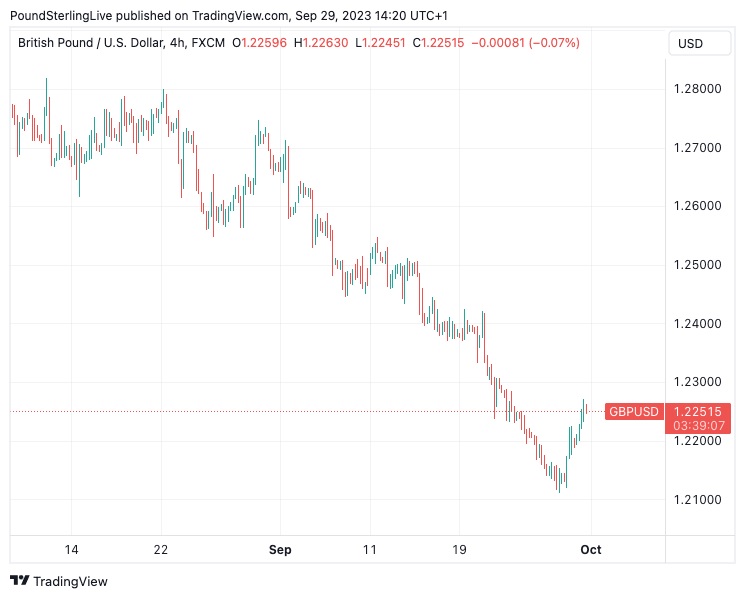 Dollar Softens as Core PCE Index Falls Below Expectations Sub-title 2: Market Dynamics Shift Amidst Fed’s September Policy Decision
Dollar Softens as Core PCE Index Falls Below Expectations Sub-title 2: Market Dynamics Shift Amidst Fed’s September Policy Decision
The Pound to Dollar exchange rate (GBPUSD) is showing signs of potential recovery from a series of weekly losses, buoyed by recent developments in the U.S. PCE price index. This critical indicator, closely monitored by the Federal Reserve, has recently failed to meet expectations, contributing to a softer U.S. Dollar and a shift in market sentiment regarding future interest rate hikes.
Indicative of consumer-focused inflation, the core PCE index in August registered a modest month-on-month increase of 0.1%, falling short of the anticipated 0.2% rise and lagging behind July’s 0.2% figure. On an annual basis, the index recorded a decline from 4.3% to 3.9%, in line with expectations.
According to Ali Jaffery, an economist at CIBC Capital Markets, “The Fed’s preferred inflation gauge, the core PCE deflator, cooled in August to its slowest rate of increase since November 2020.”
Following the release of these figures, the GBPUSD exchange rate saw an uptick, reaching a daily high at 1.2270, consolidating its support around the 1.2110 level established earlier in the week.
Furthermore, the data unveiled that consumer spending in August increased by 0.4%, falling short of consensus expectations for a 0.5% gain and trailing the previous month’s 0.8% surge. Real spending edged up by a mere 0.1% during the same month, primarily driven by a 0.4% rise in the PCE deflator, largely attributed to higher energy prices. Personal income also came slightly below consensus projections, registering a 0.4% increase.
Jaffery noted, “Today’s report tells the Fed that the persistence of inflation is becoming less of a problem, likely because of supply-side improvements.”

The Dollar initially rallied in response to the Federal Reserve’s September policy decision, where it outlined expectations for another rate hike in 2023 and successfully countered market expectations for significant rate cuts in 2024. This shift was motivated by the ongoing economic resilience and the Fed’s caution that inflation may remain more persistent than previously thought.
The recent PCE figures suggest that while concerns about inflation may not completely dissipate, they could be alleviated to some extent. Long-term U.S. bond yields saw an increase following the Fed’s decision, signaling that markets were receptive to the Fed’s message of keeping rates elevated for an extended period.
Although the PCE inflation figures alone may not completely reverse the prevailing market dynamics, they could serve as a pivotal step in confirming that recent market movements may have been overly extended. This development holds the potential to influence the GBPUSD exchange rate in the coming weeks as traders reassess their positions and outlooks.
In conclusion, the GBPUSD exchange rate appears poised for a potential rebound, driven by a combination of weaker-than-expected U.S. inflation data and evolving market sentiment following the Federal Reserve’s policy decision. While challenges remain, the recent developments in the PCE price index suggest a shift in the economic landscape that could impact currency markets in the near term.




